Visiting Oceania is a wonderful opportunity, and international travelers to this area would surely want to use their mobile phones. However, it is vital with international phone travel to ensure not only that the phone will allow access to essential data and communication, but that expensive phone bills and roaming fees are avoided as well. Utilizing a local SIM card is often the best way to stay connected at reasonable costs while traveling to places such as Oceania.
So, what is the best SIM card for Oceania? The best SIM card for Oceania depends on the country being visited, the length of visit, and how a mobile device is used while there. Oceania is made up of 14 independent countries and 12 dependent overseas territories. Therefore, it is beneficial to understand the best options and how to purchase a local SIM card linked to the country visited to simplify and keep your phone bill affordable while traveling.
Being without cell phone service can be everything from concerning to anxiety-provoking, particularly in an unfamiliar area or when far from home. Most travelers assume that their phones will work nearly everywhere they go. Roaming, in general, allows this to be the case. However, the lack of information about roaming can lead to unexpected and distressing costs on top of travel expenses. Therefore, it is crucial to know the best SIM card options for those traveling to Oceania.
Original publication: 15th of November 2019. Last updated: 15th of January 2024.
Table of Contents
Overview of Roaming and How It Works
When it comes to traveling, especially in international places such as Oceania, your cell phone may be subject to what is called roaming. Roaming is a situation in which a mobile phone is used outside the range of its home network. This can create unfortunate service interruptions as well as pricey added data charges. However, most travelers consider their phones to be essential items to bring. In this case, they should know everything possible about roaming.
Roaming is a term used in wireless telecommunication that indicates a mobile device is outside the range of its “home” network and has connected to a different, available cell network. This benefits cellular customers when they travel outside their geographical network coverage area because they can use a “visitor” network to make and receive calls, as well as utilize data and other services
Most cell phone users would not even consider traveling without their phones and for a good reason. Cell phones are crucial in an emergency and can provide access to important and helpful travel information, such as:
- Means of communication
- Local medical services
- Maps
- Directions
- Accommodations
- Entertainment
- Transportation
- Tourism advise and suggestions
- Language translation
- Cultural explanations
- Camera capabilities
- Connection to social media sites
However, though roaming is beneficial for receiving a cellular signal when you are outside your personal phone carrier’s operating region, it can negatively impact your phone bill. Roaming nearly always incurs expensive surcharges for utilizing another mobile service to make or receive calls and text messages as well as data usage. As a result, roaming charges can add hundreds and perhaps even thousands of dollars to your cell phone bill if you are not aware of how to mitigate them.
Cell phone roaming works as a function of the capabilities of the phone itself and the services provided by wireless mobile networks. Cell phones are designed to connect to the mobile operator associated with their initial purchased service. Phones that are connected with national, domestic carriers may not have the compatibility to connect to networks in international markets; therefore, they may not work during international travel.
Carriers are aware of the dependence of their customers on roaming capabilities. This allows cellular networks to incorporate roaming charges—especially when it comes to international travel. Though most domestic roaming services are regulated, international roaming service charges can reach excessive levels. One way to overcome roaming service charges is to use a local SIM card.
If you want to learn more about roaming, check out my in-depth everything you need to know about roaming guide – it is worth the read!
SIM Card Overview
A SIM (subscriber identification module) card is a “smart” card inside a mobile phone that contains an identification number that is unique to the phone’s owner. A SIM card stores personal data and prevents the cell phone from operating if it is removed.
This removal can be beneficial for international travelers with GSM (Global System for Mobile communications) phones since it indicates an international standard for cellular service. GSM phones provide flexibility for international travel in that the domestic (national) SIM card can be removed and replaced with a new SIM card.
In other words, travelers who plan to spend a significant amount of time abroad may decide that it is cost-effective to purchase an international phone plan with a new SIM card. They can then remove their domestic carrier SIM card and use the international carrier card until they return home. Once home, they can remove the international SIM card and replace it with their original SIM card.
Rates for international SIM cards vary depending on the type of mobile phone, location, and data usage. Some plans allow a purchase of a certain amount of data to be used in available countries for a limited amount of time.
Other international SIM card plans work on a “pay as you go” or prepaid system so that customers are only paying for their actual data usage. These roaming prices also vary by location, so that the money added to or provided by the international SIM card is depleted based on rates of usage in each destination.
Benefits of Local SIM Cards in Oceania
Purchasing a local SIM card while traveling to countries in Oceania benefits international tourists when it comes to safety and cost. A SIM card will help travelers avoid expensive roaming charges. Also, SIM cards provide security in that tourists do not have to rely on locations with free WIFI. These open networks put travelers at risk for cybercrime and hacking of personal information. With a SIM card, users can rely on a private data network (if you plan on using public WIFI hotspots, which you certainly will, I would recommend using a Virtual Private Network (VPN) to protect your data. I have been using NordVPN for years, and you can get up to 70% off your subscription – get yours today!).
To get the most benefit from using SIM cards in Oceania, tourists need to know how they intend to use their phone and the approximate data usage. This will ensure that the right package option is purchased for the right price. Additionally, it is essential to understand what is provided for each SIM card package as far as data consumption and expiration time.
Generally, sales representatives should be able to unlock purchased SIM cards and help you set it up with your device. There may also be remote mobile operators that can help you with any troubleshooting.
Best SIM Cards for Oceania
Oceania is a geographic region that spans both the eastern and western hemispheres, including the areas of Australasia, Melanesia, Micronesia, and Polynesia. Oceania is surrounded by the India and Pacific Oceans. The region includes the mainland of Australia, some bigger islands such as New Zealand, and thousands of small, tropical islands throughout the South Pacific.
The countries in the region of Oceania feature some of the most beautiful scenery on earth. Travelers can find diverse landscapes, including rugged coastlines, dense forests, countryside areas, deserts, tropical beaches, and even volcanoes.
The area features 14 independent countries which include:
- Australia
- Fiji
- Kiribati
- the Marshall Islands
- Micronesia
- Nauru
- New Zealand
- Palau
- Papua New Guinea
- Samoa
- the Solomon Islands
- Tonga
- Tuvalu
- Vanuatu
(Countries with clickable names link to in-depth articles covering the local SIM card options of the said country)
The dependent territories of Oceania are not considered sovereign political and economic entities. They include:
- American Samoa (USA) – Article
- Cook Islands (New Zealand) – Article
- French Polynesia (France) – Article
- Guam (USA) – Article
- New Caledonia (France) – Article
- Niue (New Zealand) – Article
- Norfolk Island (Australia)
- Northern Mariana Islands (USA) – Article
- Pitcairn Islands (United Kingdom)
- Tokelau (New Zealand)
- Wake Island (USA)
- Wallis and Futuna (France) – Article
For the purposes of this article, SIM cards will be addressed as they pertain to the independent nations that make up Oceania—not the dependent territories. They deserve their own article one day.
Tip: Looking for cheap flights? Book with AirWander and add stopovers! Not in a hurry yet? Set up flight alerts with Airfarewatchdog and get notified when ticket prices for your preferred route(s) drop!
Australia SIM Cards
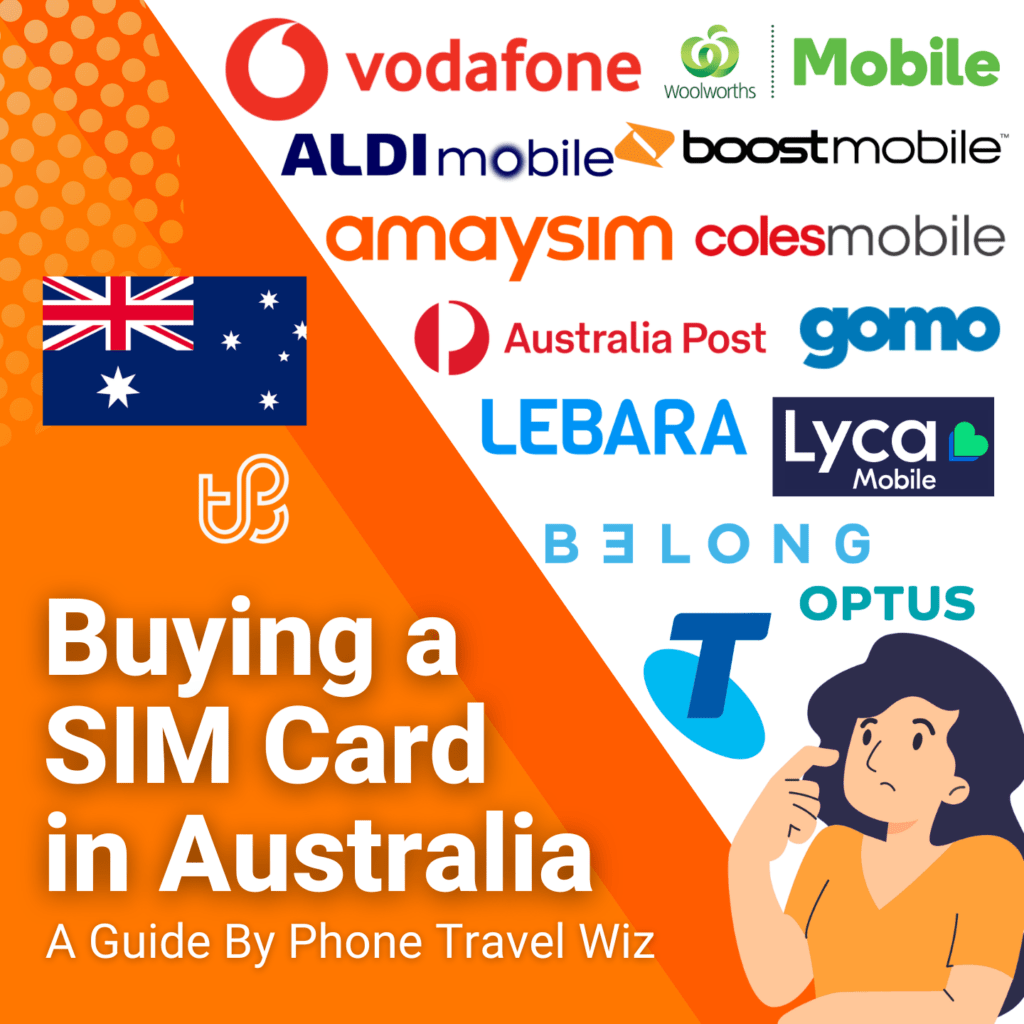
Australia is one of the most popular tourist destinations in the world. With its amazing cities, beaches, outback landscapes, culture, cuisine, and exotic animals, there is no rational reason to avoid an opportunity to visit. While you’re there, it is simple to set up a SIM card for your mobile phone so that you can stay in touch with those at home and take pictures of your adventures.
Australia features three mobile phone networks:
(Click the links to see the review of the said provider)
There are smaller telephone companies hosted by these networks that may offer cheaper SIM cards, but finding their retailers is more complicated. Tourists should check network coverage maps ahead of time to find the company with the best mobile coverage in the area to be traveled. The three main networks provide similar coverage in populated areas of Australia, but Telstra and Optus are better in remote areas.
The easiest and least expensive way of staying connected when traveling to Australia is to bring your unlocked cell phone and purchase a SIM card in the country. There are phone shops located in most airports and nearly all shopping centers.
Buying a SIM card with a pre-paid limit is an inexpensive option and allows you to recharge the card online or buy “recharge” cards at supermarkets, post offices, and most gas stations. It is important to note that a photo ID such as a passport is required when buying or activating a SIM card in Australia. Phone shops will register and activate SIM cards for buyers.
The most recommended SIM card for tourists in Australia is the Optus Epic Data SIM Card. Optus Epic Data plans come with a lot of data for low prices. Additionally, if you spend more than 30 AUD (19.20) on a plan, you get unlimited minutes to 15 international destinations, such as China, Hong Kong, Indonesia, New Zealand, and a few more.
RELATED: Want to learn more about SIM cards in Australia? Check out my Australia SIM card buying guide with up-to-date and detailed information regarding prices and packages.
Fiji SIM Cards
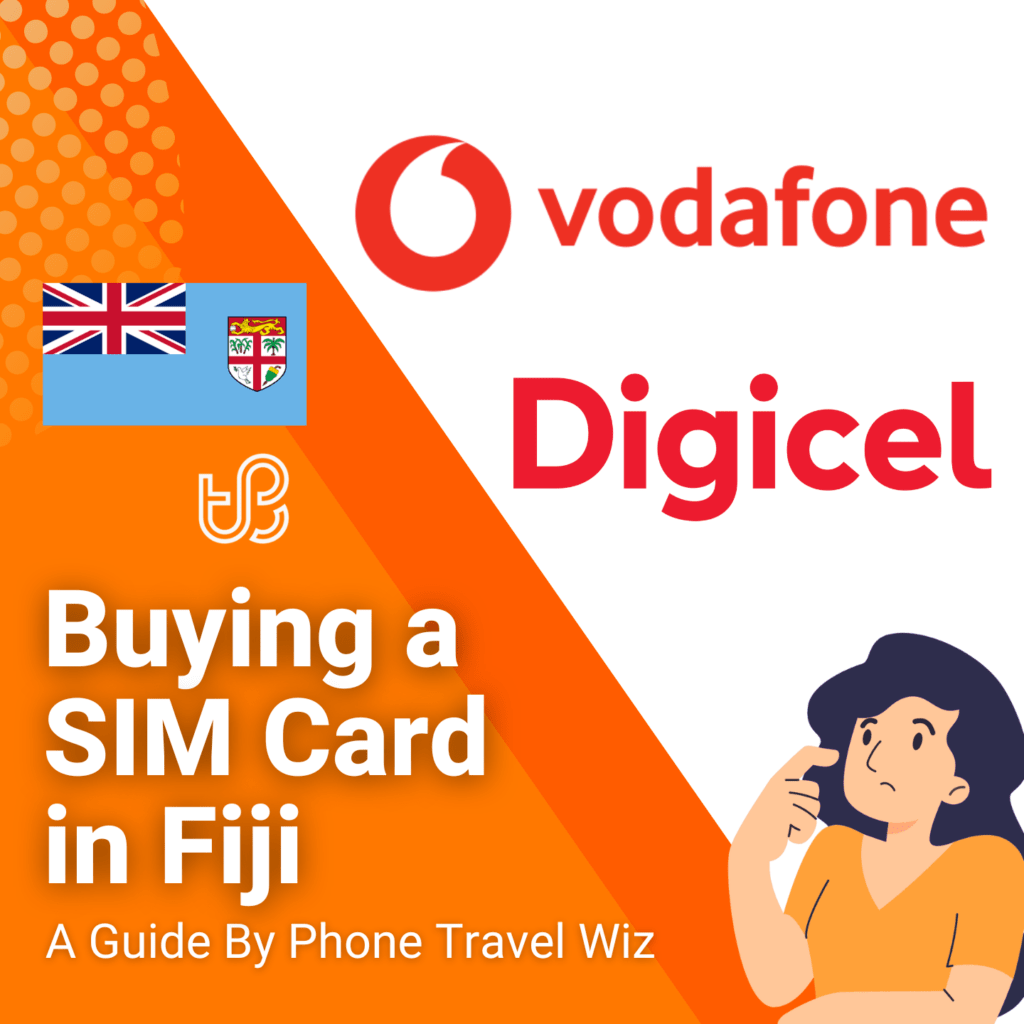
Fiji is known for crystal clear water and the ideal tropical destination with protected reefs featuring soft coral formations and nearly a thousand species of fish. Tourists spend relaxing vacations here, where snorkeling and diving are prime activities.
There are two primary phone networks in Fiji:
- Vodafone Fiji
- Digicel Fiji
Both provide similar coverage, the strongest in the most populated areas. Vodafone offers stronger coverage in the Yasawa Islands and near Vanua Levu. Digicel is stronger in coverage within inland parts of Viti Levu.
The best SIM card option in Fiji carries the Vodafone Fiji Tourist Pack Pay-As-You-Go Rates. This tourist starter pack comes with a bundle limit and expiration, such that if tourists exceed either, they will pay the pay-as-you-go rates. The packaged bundle is set up in this way in Fiji Dollars:
- Calls: 28 cents per 30 seconds to Vodafone numbers; 31 cents per 30 seconds to landlines
- Texts: 18 cents per text to Fiji and international numbers
- Picture Messages: 30 cents per MMS to Fiji and international numbers
- Internet Browsing: $2.79 FJD per MB
SIM cards are available at Fiji’s Nadi International Airport, convenience stores, supermarkets, and phone operator stores. Registration of SIM cards purchased in Fiji is mandatory.
UPDATE: This is old advice because back when I was in Fiji many years ago, travelers could not get regular SIM cards. Get your Vodafone Fiji SIM card for 4.70 FJD ($2.10), and a data pack ranging from 2 FJD ($0.90) with 450 MB for 24 hours to 45 FJD ($20) with 5 GB, unlimited Snapchat, Instagram, Twitter, and Facebook for 30 days. Much better than the following Vodafone Fiji data packs:
- 35 FJD: 35 MB and 25 FJD in credit
- 70 FJD: 60 MB and 50 FJD in credit
- 100 FJD: 90 MB and 75 FJD in credit
RELATED: Want to learn more about SIM cards in Fiji? Check out my Fiji SIM card buying guide with up-to-date and detailed information regarding prices and packages.
Kiribati SIM Cards
Kiribati, located in the Central Pacific, features beautiful beaches, fantastic surfing, and exotic diving locations. There is only one network operator in Kiribati: ATH Kiribati (ATHKL). Most travelers find that purchasing a local SIM card in Kiribati is less expensive than home phone roaming rates.
ATHKL is known for reliable network coverage and sells prepaid credit for tourists. These prepaid SIM cards can be purchased from the airport, the official company store, or supermarkets. Passports may not be required for purchase, but it is best to have some form of identification available.
Prepaid SIM cards can be purchased for 5 AUD ($3.50), and then credit must be added to use the cards. Credit can be obtained from most supermarkets or kiosks displaying the ATH logo. Recharge cards or top-up cards can also be purchased in addition to various data packs.
ATH Kiribati Data packs range from 2 AUD ($1.30 – 200 MB for 24 hours) to 30 AUD ($19.20 – 4 GB for 30 days)
RELATED: Want to learn more about SIM cards in Kiribati? Check out my Kiribati SIM card buying guide with up-to-date and detailed information regarding prices and packages.
Marshall Islands SIM Cards
The Republic of the Marshall Islands is located near the equator in the Pacific Ocean. On this small grouping of islands, there is only one mobile operator, NTA (or MINTA for Marshall Islands National Telecom Authority).
MINTA operates a network for WiFi hotspots and fixed internet on the islands of Majuro, Ebeye, Jaluit, Kili, Rongelap, and Wotie (make sure to use a VPN before connecting to any of these hotspots). SIM cards cost $15.00 without call credit and are available at MINTA offices on Majuro. Recharges are also available there as well as from some hotels and banks. MINTA also provides combination plans with talk, text, and data at 120 domestic minutes and 120 texts for 30 days for about $50.00, and a data-only plan for 30 days for approximately $40.00.
Micronesia SIM Cards
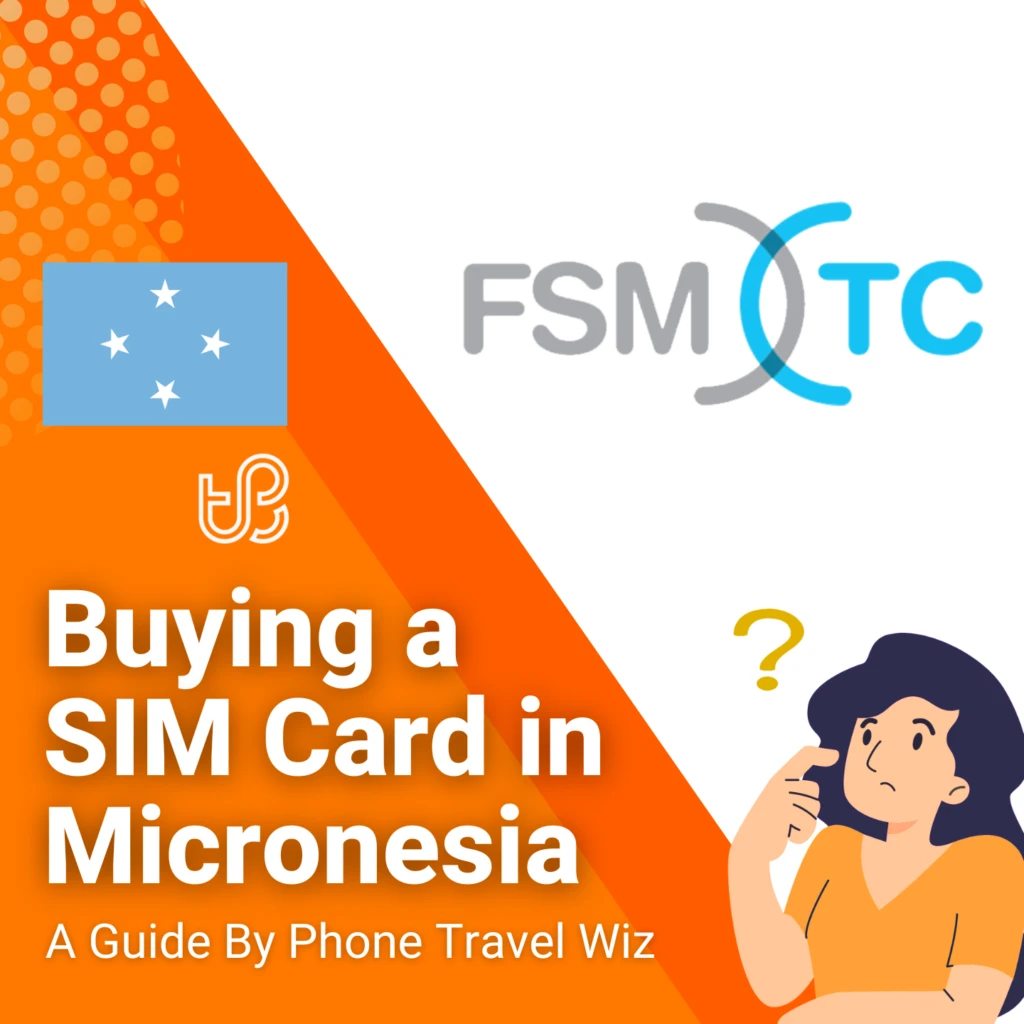
The Federated States of Micronesia (FSM) features over 600 islands located south of Guam and east of the Philippines. Micronesia relies on satellite technology for remote areas where telephone communication infrastructure is not established. Therefore, the data is slow and expensive. The only mobile network available on the main islands is FSM Telecom.
The only way for tourists to connect while in Micronesia is to buy a local SIM card or logon to a WiFi hotspot. This is because FSM Telecom does not have roaming agreements with most foreign operators. Coverage is only available on the 4 main islands of Chuuk, Kosrae, Pohnpei, and Yap.
Tourists can purchase SIM cards for about $10.00 without any airtime. These are available from FSMTC retail shops, the main one located in front of Chuuk International Airport. Refill cards are also available there and from local shops. These cards are known as FSM Tel-Cards and can add credit to mobile phones and WiFi internet. Tourists need to know that activated packages do not automatically renew, so a refill should be purchased before the card expires or is used up.
FSM Data packages are relatively expensive, starting from $2 with unlimited data until 3:50 AM to $50 with 5 GB, 120 minutes, and unlimited SMS for 30 days.
RELATED: Want to learn more about SIM cards in Micronesia? Check out my Micronesia SIM card buying guide with up-to-date and detailed information regarding prices and packages.
Nauru SIM Cards
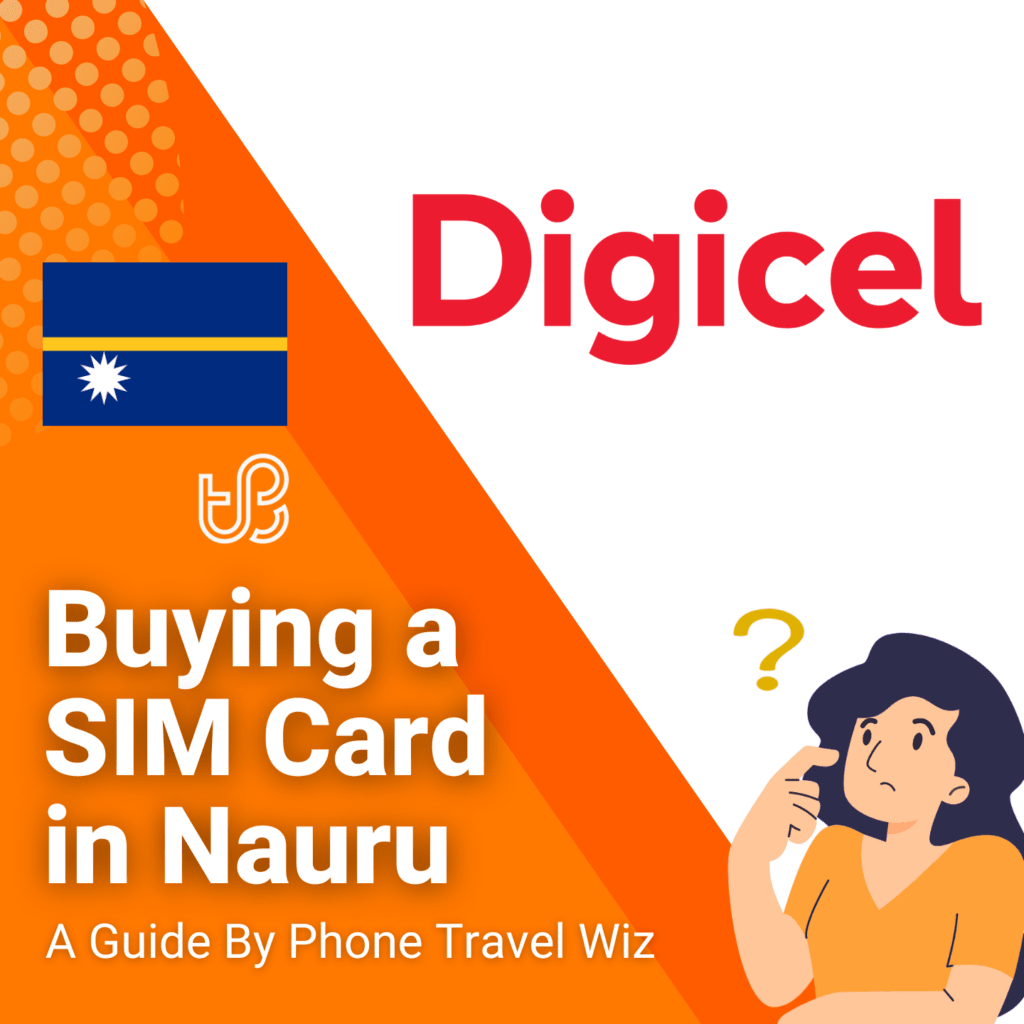
Nauru is the smallest state in the South Pacific. It is famous for tourists who wish to explore its diverse marine life as well as snorkeling, scuba diving, and fishing activities. Visitors to Nauru can avoid expensive roaming fees by purchasing a local SIM card, with starter packs available for purchase for 10 AUD ($6.90).
There is just one network operator on the island, Digicel Nauru, with a kiosk at the international airport and main store at the Civic Center. You can choose from 7 data packs, ranging from 3.15 AUD ($2 – 75 MB for 24 hours) to 47 AUD ($30 – 3.6 GB for 30 days).
RELATED: Want to learn more about SIM cards in Nauru? Check out my Nauru SIM card buying guide with up-to-date and detailed information regarding prices and packages.
New Zealand SIM Cards
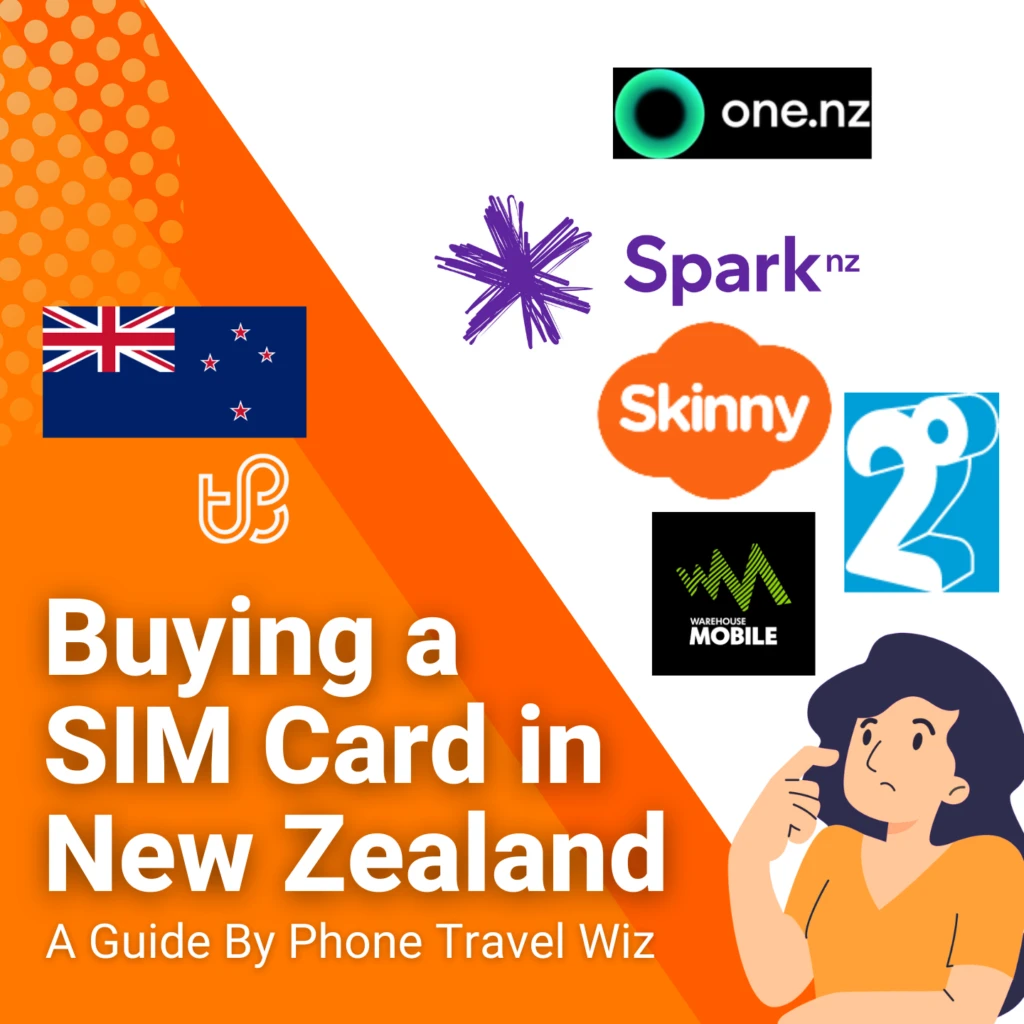
New Zealand is one of the most-visited tourist destinations in the world for its scenery, outdoor activities, and culture. Due to its tourism, New Zealand also has competition among SIM card providers, which gives international phone travelers access to good deals.
The three major mobile phone networks in this country are:
- Vodafone New Zealand
- Spark
- 2degrees
Vodafone covers the majority of the mobile phone market in New Zealand and is considered the best value for traveler SIM cards. Spark, the leading Kiwi operator, has the best coverage, but they are expensive.
With Vodafone, you can get My Flex Prepay; This plan allows users to combine minutes, texts, and data in any way the customer wishes, beginning with 50 minutes, 50 texts, and 250 MB of data for 13 NZD ($7.80).
You can also get the Vodafone NZ Travel SIM starting from 29 NZD ($17.50) with 1.5 GB, 200 minutes, unlimited SMS to NZ numbers and a few other countries, and unlimited WhatsApp, Viber, and Facebook Messenger – all for 30 days. The Travel SIM goes all the way up tp 99 NZD ($59.60) with 20 GB.
Spark and 2degrees also offer value packs when it comes to prepaid SIM cards for visitors. However, the best deals for options prices come from Vodafone.
RELATED: Want to learn more about SIM cards in New Zealand? Check out my New Zealand SIM card buying guide with up-to-date and detailed information regarding prices and packages.
Palau SIM Cards
Palau rose to fame as a location of the TV series “Survivor.” It is considered one of the most beautiful and tropical islands in the South Pacific. Palau relies on satellite technology for internet access, but visitors can reduce roaming charges by purchasing a prepaid SIM card. These cards cost about $25.00 and include $10.00 for airtime.
The Palau National Communications Corporation (PNCC) is the only network provider for Palau. Internet speeds are slow throughout the islands, and since PNCC has a monopoly on the island chain, it can set prices as it wishes.
Palau features two PNCC offices for visitors to purchase prepaid SIM cards in Koror and Airai. PalauCel offers different plans for minutes, depending on how much cell usage visitors anticipate they will need. It is important to realize that all PNCC plans are charged for the month, and the data price for PalauCel is $0.15 per MB, so customers are encouraged to choose a reasonable data package to mitigate costs.
PNCC data packs start from $2 with 500 MN for 2 days to $25 with 8 GB for 30 days.
RELATED: Want to learn more about SIM cards in Palau? Check out my Palau SIM card buying guide with up-to-date and detailed information regarding prices and packages.
Papua New Guinea SIM Cards
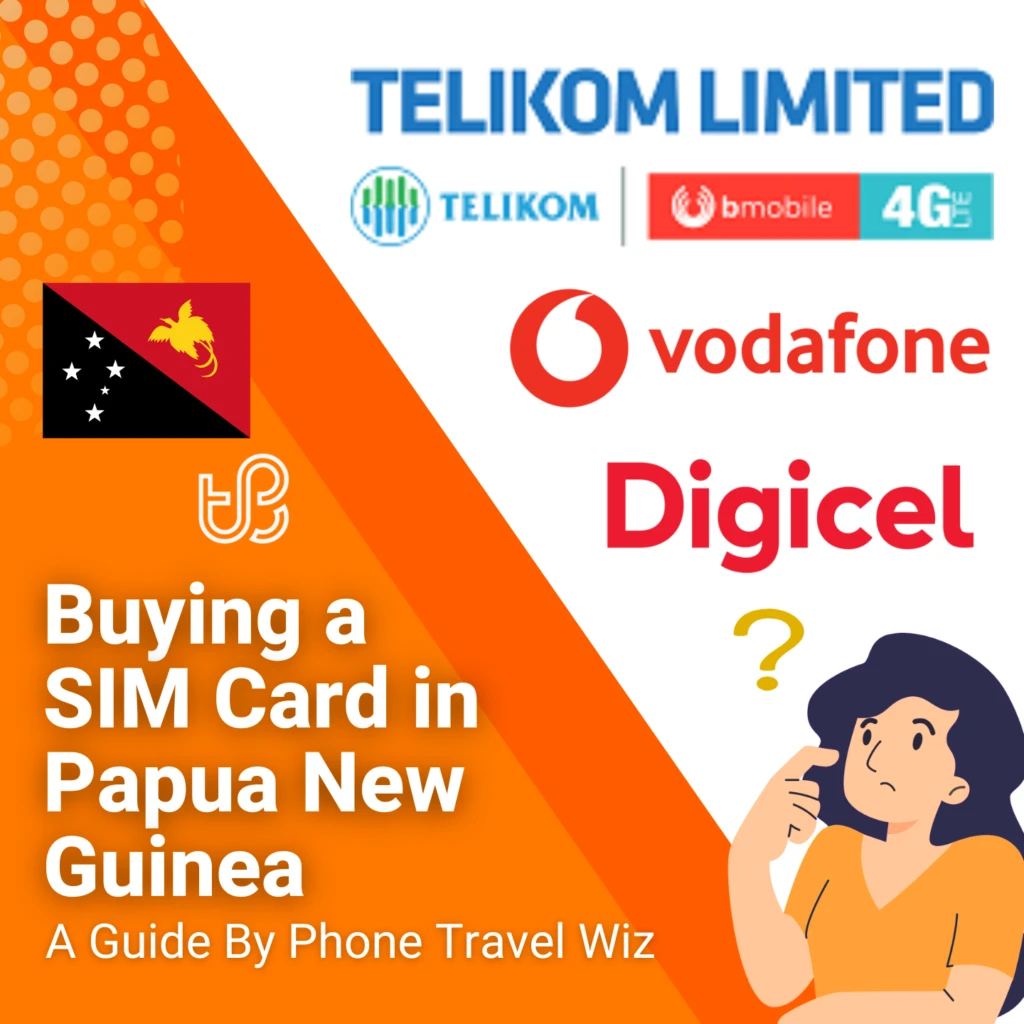
Papua New Guinea is an island nation that features incredible diversity and rural landscapes. There are very few urban locations here. Tourists are advised to invest in prepaid local SIM cards to cut down on data, phone, and texting expenses in this country. A seven-day SIM card with 1.2GB of data costs about $13.00. SIM card registration is mandatory for connection and operation. Users must register their name, address, and occupation, as well as agree to be photographed.
There are three network operators in Papua New Guinea:
- Digicel PNG
- bmobile-Vodafone
- Telikom Mobile
Bmobile-Vodafone and Telikom Mobile offer SIM cards, although their rates, packages, and coverage are inferior to Digicel.
Digicel has the most coverage and the largest number of customers. Its prepaid SIM cards can be purchased across the country, with top-ups available on their website or through vouchers called flex cards. Digicel also provides a variety of data plans based on length of stay, including plans for less than a day and strictly for social media. Once Digicel bundles run out of credit, they automatically renew. Digicel SIM cards hold the best value and performance for travelers to Papua New Guinea.
Get yourself a data pack. Digicel data packs start from 3 PGK ($0.90) with 60 MB for 1 day to 450 PGK ($125.20) with 13 GB for a month.
RELATED: Want to learn more about SIM cards in Papua New Guinea? Check out my Papua New Guinea SIM card buying guide with up-to-date and detailed information regarding prices and packages.
Samoa SIM Cards
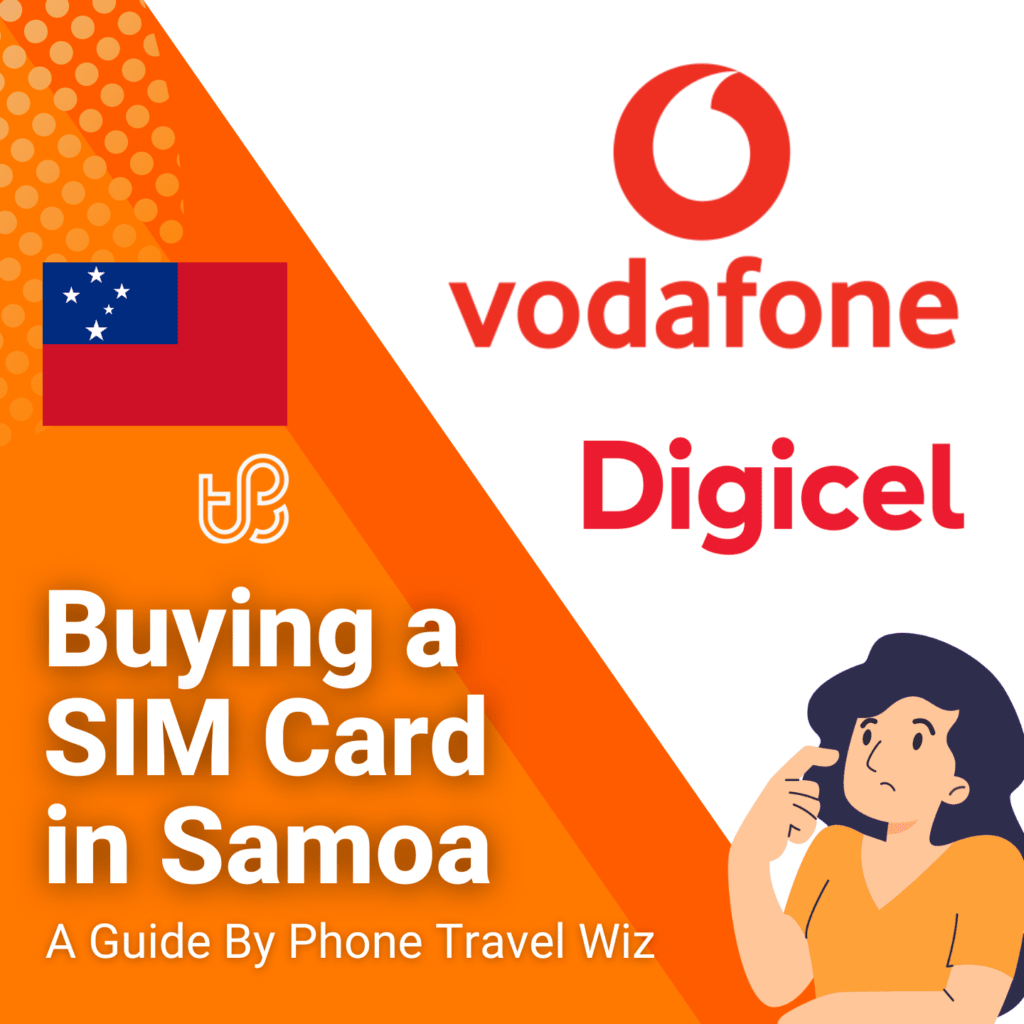
Samoa has become a popular family vacation destination with the release of the movie “Moana,” whose island was inspired by this Polynesian location. Samoa is a chain of islands known for gorgeous scenery and warm beaches. To further enjoy your stay, you can purchase a prepaid local SIM card for about $12.00 that comes with $1.00 credit and 1GB of data for a week.
Samoa features two mobile operators:
- BlueSky Samoa
- Digicel Samoa
Both companies hold kiosks at Faleolo Airport. Digicel generally has lower prices but also less coverage. Their SIM cards can be purchased for a small fee, and customers can top-up at the company’s retail outlets through vouchers or flex cards.
BlueSky is the larger provider on the island with better coverage, though slightly higher prices. Tourists are better off with BlueSky service when it comes to reliability. This company offers two prepaid SIM cards, one that includes voice and data usage (for 10 WST or $3.80) and one that is data-only (SpeedNet). Their basic SIM card can be topped up through “e-charges,” which can be purchased at various Samoan stores or online through the company’s website. E-charges are valid for 30 days once activated.
The most you will pay for a BlueSky combo pack is 90 WST ($34.20) for 6.5 GB for 15 days. SpeedNet SIM cards are sold in 2G/3G and 4G/LTE variants. With the SpeedNet 4G/LTE SIM card, the most data you can get is 14.4 GB for 30 days for 145 WST ($52.40).
RELATED: Want to learn more about SIM cards in Samoa? Check out my Samoa SIM card buying guide with up-to-date and detailed information regarding prices and packages.
Solomon Islands SIM Cards
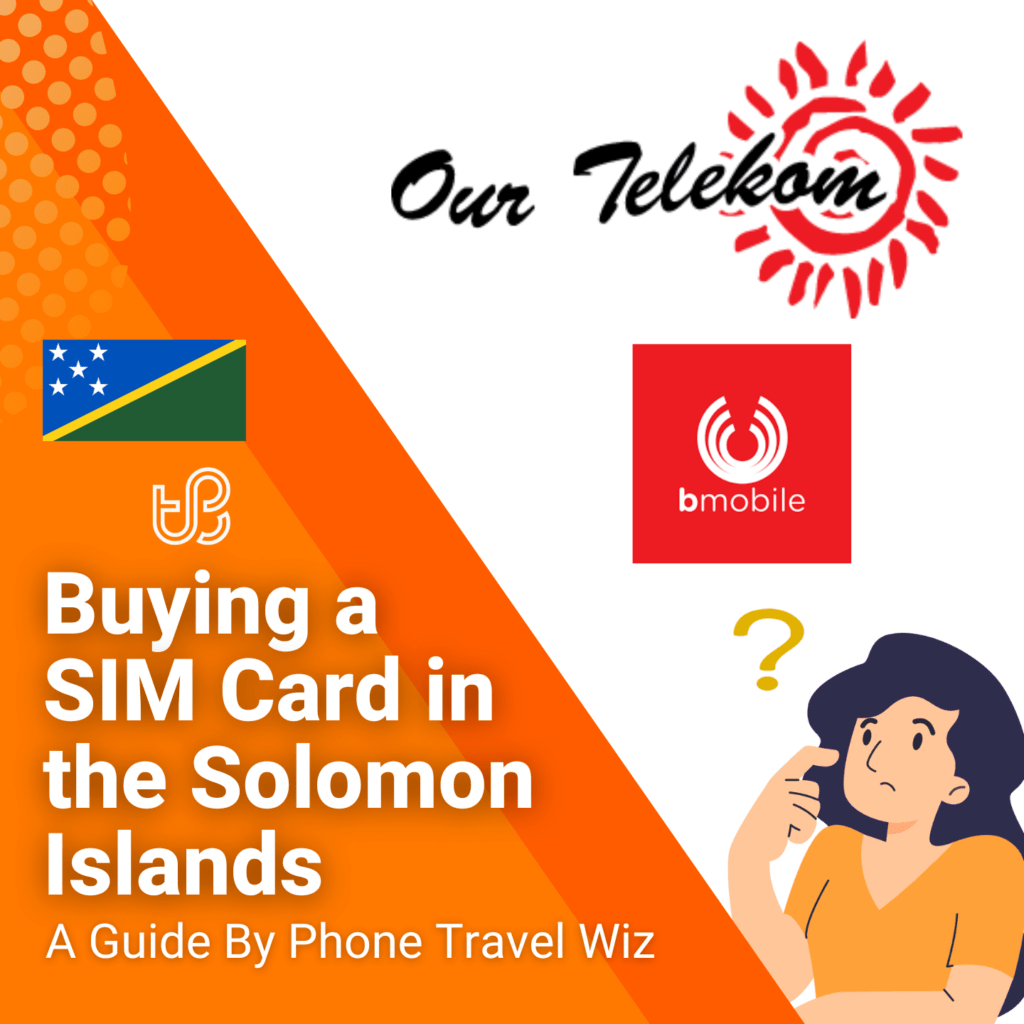
The Solomon Islands is known for being the site of the World War II Battle of Guadalcanal. However, it is also a tropical vacation spot for tourists. Visitors to the Solomon Islands are encouraged to buy a local prepaid SIM card for as low as 20 SBD ($2.40) and get a data package with 1.5 GB for 100 SBD ($12).
The Solomon Islands has two mobile networks: Our Telekom and Bmobile-Vodafone. Coverage is weaker for the remote islands. Here are the features that each mobile company offers for international travelers:
- Our Telekom: This company is entirely locally owned. Its SIM cards are sold at company stores, and customers can purchase data bundles (recommended).
- Bmobile-Vodafone: This company has partnered with Vodafone and serves only the main provinces of the Solomon Islands. Though its rates are a bit lower than Our Telekom, the coverage is less reliable. Bmobile sells prepaid cards at company stores, and top-ups can be purchased at outlets across the islands.
RELATED: Want to learn more about SIM cards in the Solomon Islands? Check out my Solomon Islands SIM card buying guide with up-to-date and detailed information regarding prices and packages.
Tonga SIM Cards
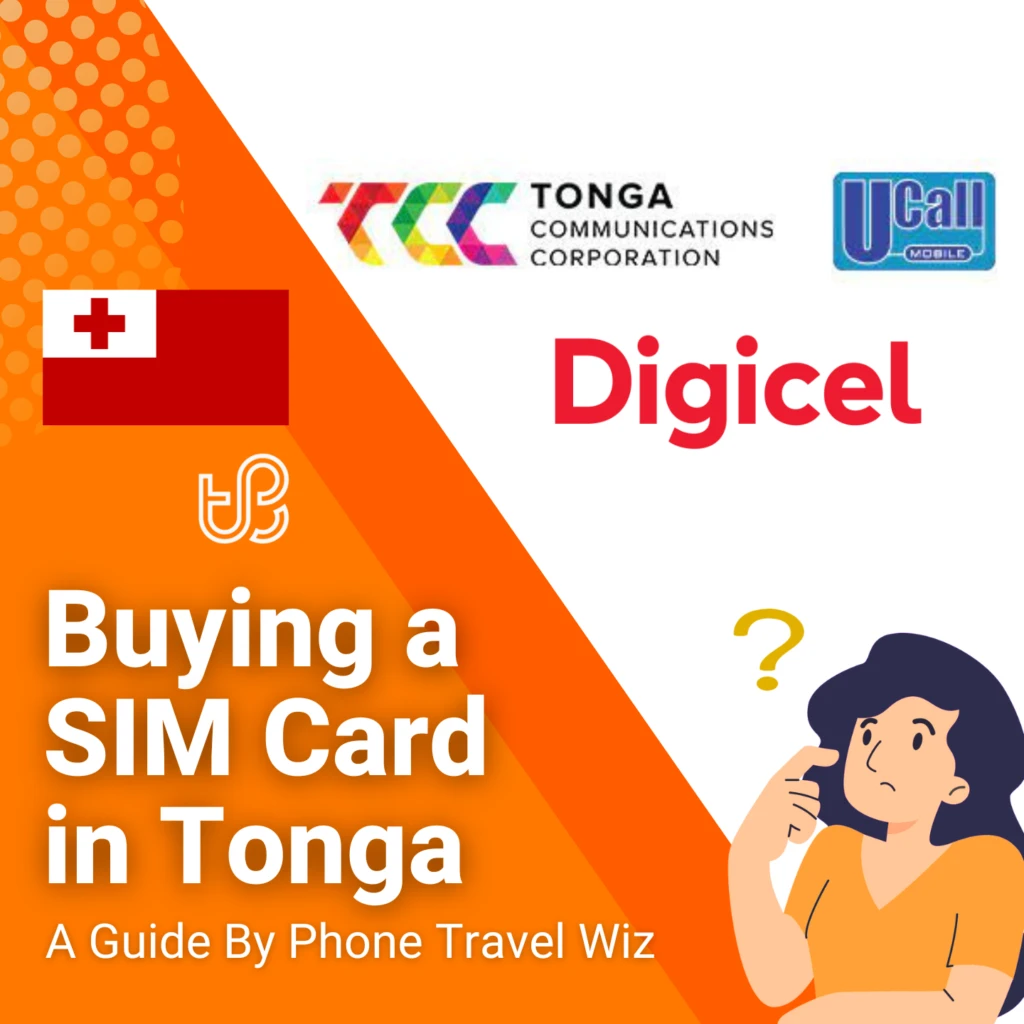
Tonga is a kingdom in the South Pacific and archipelago, with over 160 islands. Only 36 of these islands are inhabited, however.
Tonga has two mobile providers:
- TCC U-Call (Tonga Communications Corp.)
- Digicel Tonga
Both companies provide good coverage on the main islands of the archipelago. Visitors to Tonga can purchase SIM cards without registration at the international airport, in stores, and at provider agencies.
TCC U-Call SIM cards cost 5 TOP $2.20) and come with 500 MB, 500 minutes, and 500 SMS. Top-up eVouchers are available at TCC agencies, which allow customers to load credit directly to their mobile devices.
If you need more data, you can get 1 GB for 17 days for 13 TOP ($5.60)
RELATED: Want to learn more about SIM cards in Tonga? Check out my Tonga SIM card buying guide with up-to-date and detailed information regarding prices and packages.
Tuvalu SIM Cards
Tuvalu is made up of small islands totaling about 10 square miles, but they are spread out across 500,000 square miles between Hawaii and Australia. Most of the population is located on Funafuti. This island only has satellite communications for internet access, which results in slow speeds.
The only network operator in Tuvalu is Tuvalu Telecom, which is a government-owned company. Visitors to the island can expect slow internet speed and should, therefore, plan to keep usage to messaging or checking email.
Tourists can buy a basic SIM card for 10 AUD ($6.70) from Tuvalu Telecom’s main office, located just steps from the international airport in Funafuti.
Tuvalu Telecom data packages start from 5 AUD ($3.35) with 250 MB for 15 days to 750 AUD ($480) with 60 GB for 30 days. Do not get the most expensive plan, unless you have money to burn.
RELATED: Want to learn more about SIM cards in Tuvalu? Check out my Tuvalu SIM card buying guide with up-to-date and detailed information regarding prices and packages.
Vanuatu SIM Cards
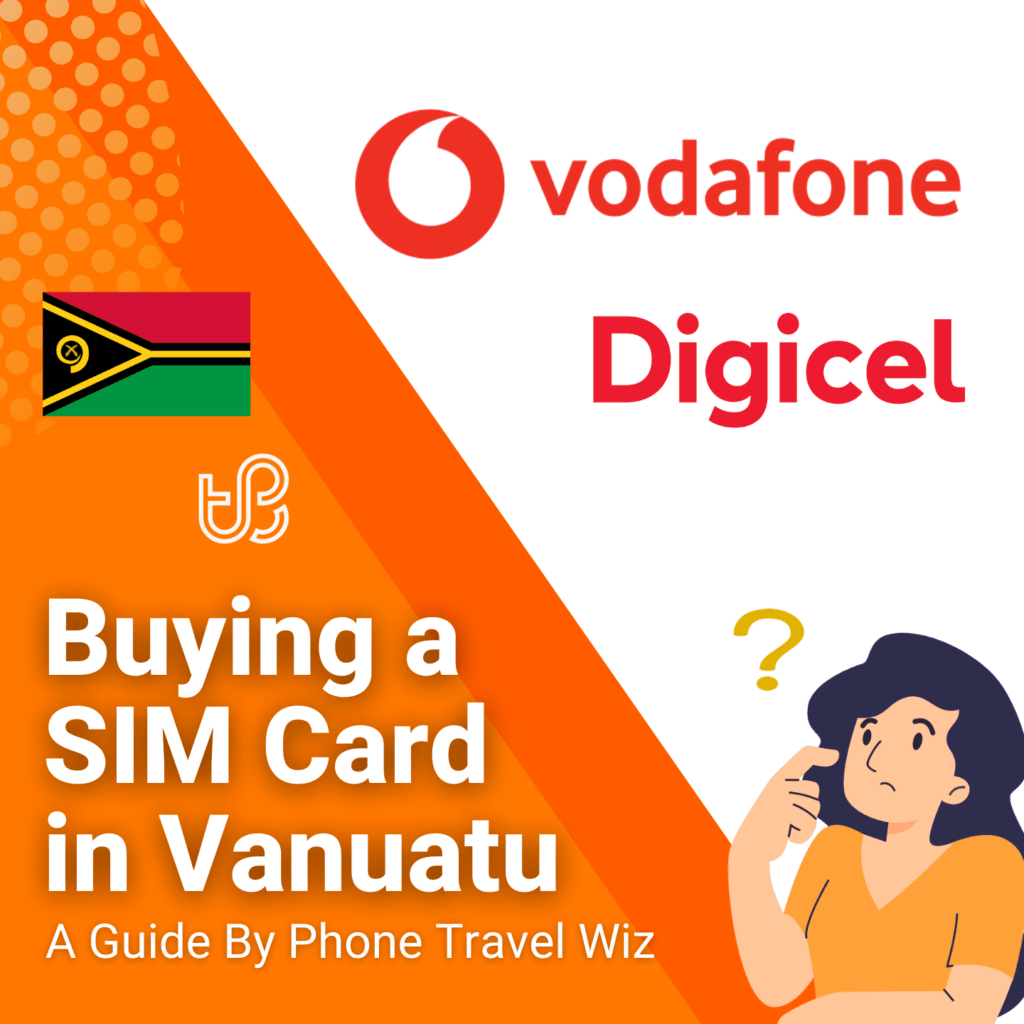
Vanuatu is a popular destination for scuba divers traveling to the South Pacific. Purchasing a local, prepaid SIM card in Vanuatu will significantly reduce roaming and data usage for international phone travelers. These cards cost about $18.00 and come with 1GB of data.
Vanuatu hosts two mobile operators:
- Digicel Vanuatu
- TVL
However, Digicel holds close to 90% of Vanuatu network subscribers. Tourists are encouraged to buy starter SIM cards that are 4G/LTE enabled for the fastest possible browsing speed. Visitors can purchase these cards at Bauerfield International Airport or in Digicel stores. Top-ups can be purchased through vouchers from local vendors or through Digicel’s international website, which accepts major credit cards.
Get yourself a Digicel SIM card for 1000 VUV ($8.60) and a data package starting from 50 VUV ($0.40 – 50 MB for 24 hours) to 6500 VUV ($53.70 – 7 GB for 30 days).
Rounding it up
There you have it! The best SIM cards for Oceania. All the nations in this region are islands, so be sure to enjoy the beach every now and then (or all the time – I will not be judging!)
If buying a local SIM card sounds like a hassle to you, then you could consider roaming with your provider, although that can be expensive, or you could buy an international SIM card. Either way, using a local SIM would be way more cost-effective than the other two options – just letting you know!
